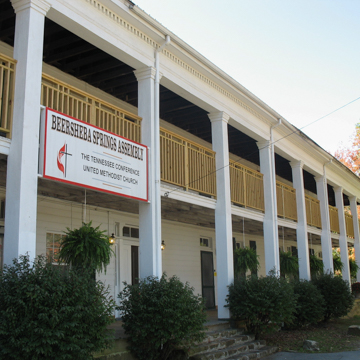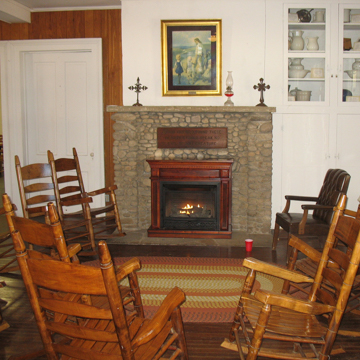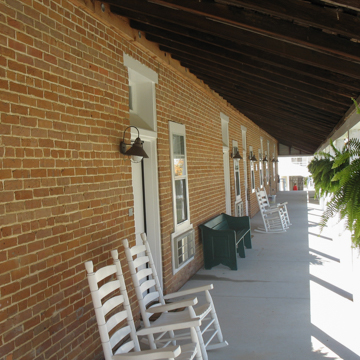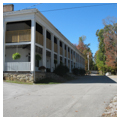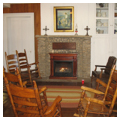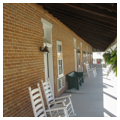You are here
Beersheba Springs Assembly
The Middle Tennessee Basin has an abundance of mineral springs and wells. One of these, Beersheba Springs in Grundy County, was “discovered” in 1833 when Beersheba Porter Cain came upon the chalybeate (iron salts) spring. The perceived curative powers of the waters and the scenic location of the springs resulted in the formation of the Beersheba Springs Company. To create a resort, a tavern built in 1836 was enlarged into a hotel and some log cabins were erected nearby. Although the resort’s location was remote when it opened in 1839, a stagecoach road from McMinnville to Chattanooga provided ready access to this area of Grundy County. Still, it wasn’t until Colonel John Armfield bought the property in 1854 that Beersheba Springs began to flourish.
Armfield was a Louisiana slave trader who may have used his slaves to expand the property and develop the springs. He first built steam, saw, and grist mills, and between 1856 and 1858 he enlarged the hotel, planted trees, and erected a laundry, ice houses, and recreational facilities for billiards and bowling. Armfield also built several cottages, including one for himself. Wealthy planters escaping the heat of the Louisiana summers followed Armfield to his resort. By the late 1850s, the facility could accommodate as many as 400 guests. To encourage an upscale clientele, the resort featured French chefs and New Orleans musicians.
The resort’s focus is the hotel, an impressive two story, weatherboarded building with massive porches on both stories, shuttered windows, and rooms with a view of the surrounding forests. L-shaped in plan, the hotel forms the corner of a large courtyard in the rear. The courtyard, eventually defined by a series of attached single-story cabins, provided a space for assembly and entertainment.
The Civil War changed the social order of the country and Beersheba Springs languished. Northern investors reopened the resort in the 1870s but it never recaptured its antebellum popularity. Charles B. Thorne notes that, of the thirty-one mineral spring resorts that operated in Middle Tennessee in the nineteenth century (most of which are no longer extant), Beersheba Springs was “the queen, for in no other community could one find as many handsome cottages or as many socially prominent people.”
In 1941 the Tennessee Conference of the United Methodist Church purchased the resort hotel and some of the land for a religious retreat, which continues to operate as Beersheba Springs Assembly. Over the years, the Tennessee Conference modernized the hotel rooms and added buildings, including a chapel and dormitories. Cottages are still owned by individuals.
References
Casteel, Brit, “Beersheba Springs Historic District,” Grundy County, Tennessee. National Register of Historic Places Nomination Form, 1979. National Park Service, U.S. Department of the Interior, Washington, DC. Includes supplemental information in the file at the Tennessee Historical Commission.
Coppinger, Margaret Brown, et al. Beersheba Springs: 150 Years 1833–1983, A History and a Celebration. Beersheba Springs, TN: Beersheba Springs Historical Society, 1983.
Gower, Herschel. “Beersheba Springs.” In Tennessee Encyclopedia of History and Culture, edited by Carroll Van West, 56 .Knoxville: University of Tennessee Press, 1998.
Thorne, Charles B. “The Watering Spas of Middle Tennessee.” Tennessee Historical Quarterly29, no. 4 (Winter 1970–1971): 321-359.
“Wish You Were Here: A Retreat to Tennessee’s Resorts: Beersheba Springs.” Tennessee State Library and Archives. Accessed July 28, 2016. http://share.tn.gov/tsla/exhibits/tnresorts/index.htm.
Writing Credits
If SAH Archipedia has been useful to you, please consider supporting it.
SAH Archipedia tells the story of the United States through its buildings, landscapes, and cities. This freely available resource empowers the public with authoritative knowledge that deepens their understanding and appreciation of the built environment. But the Society of Architectural Historians, which created SAH Archipedia with University of Virginia Press, needs your support to maintain the high-caliber research, writing, photography, cartography, editing, design, and programming that make SAH Archipedia a trusted online resource available to all who value the history of place, heritage tourism, and learning.














